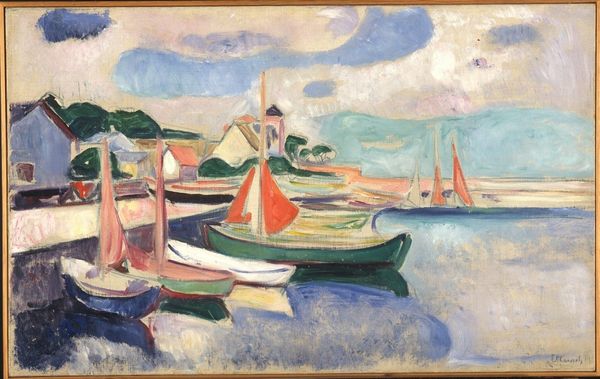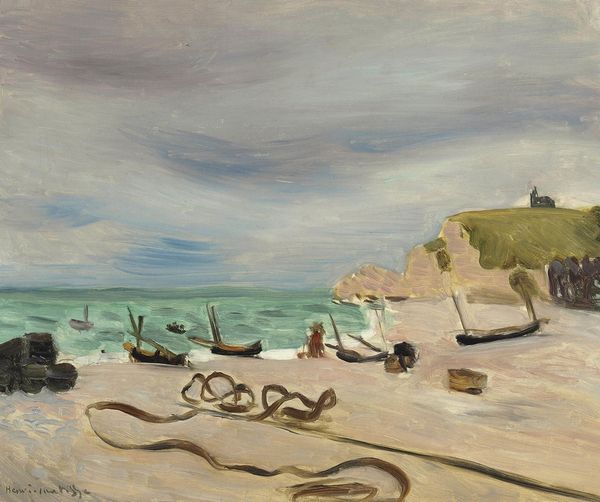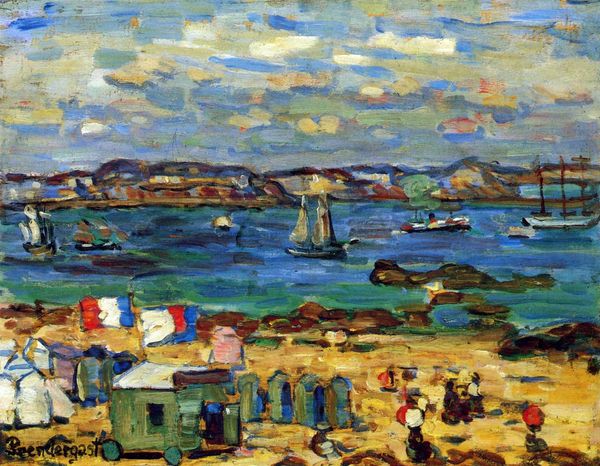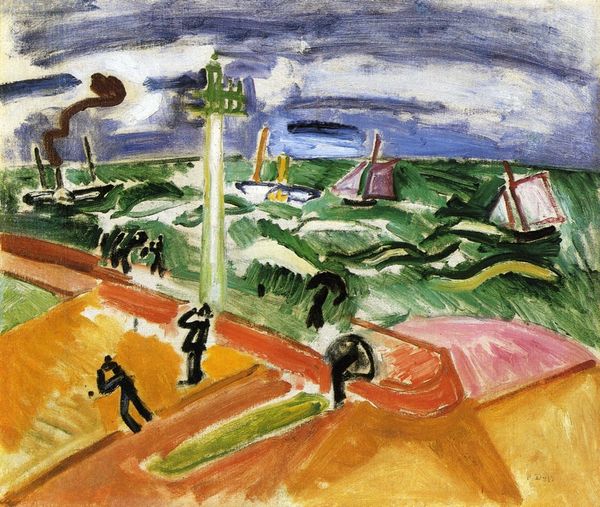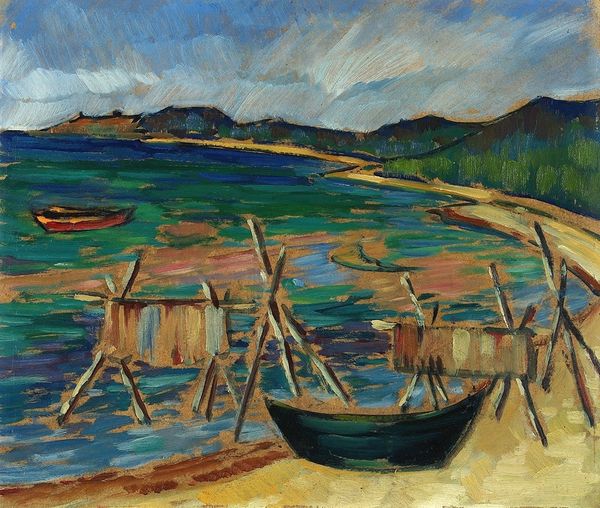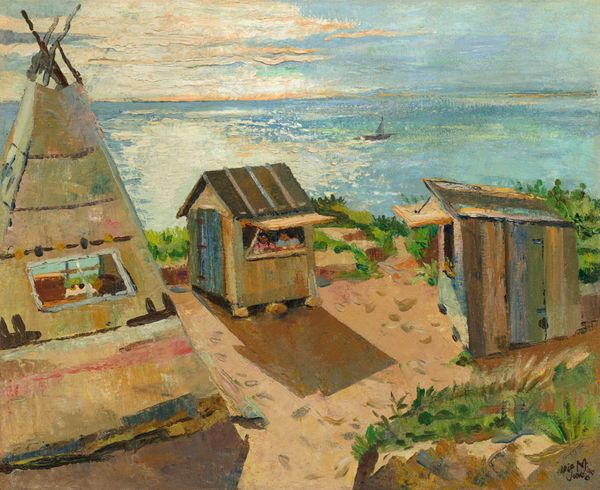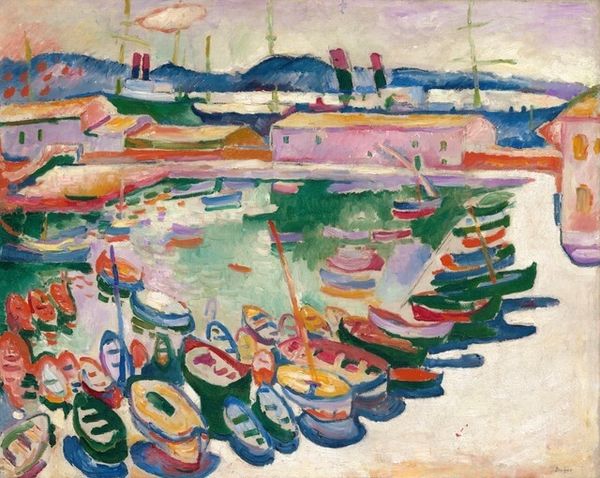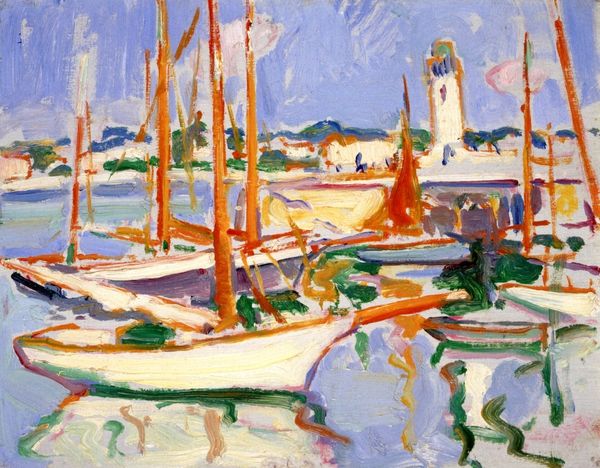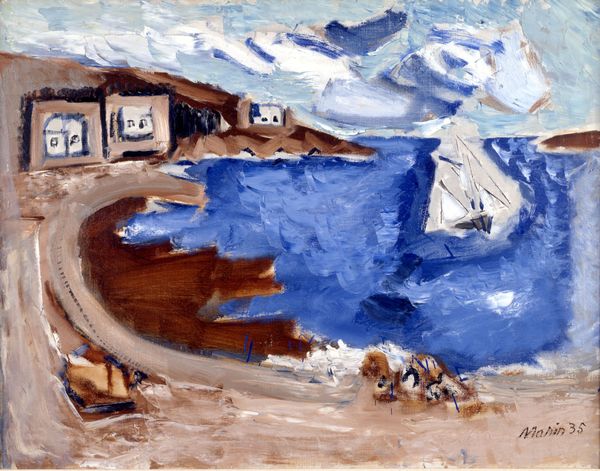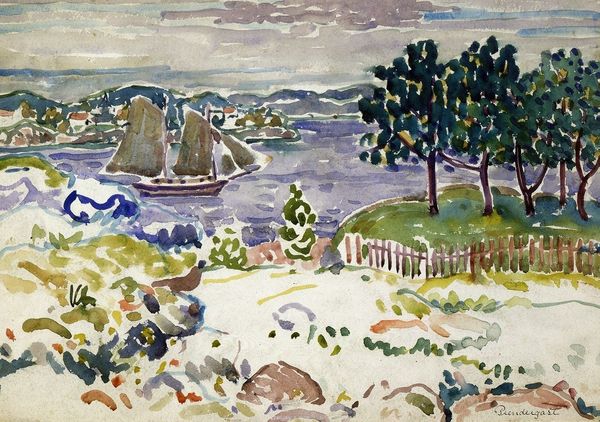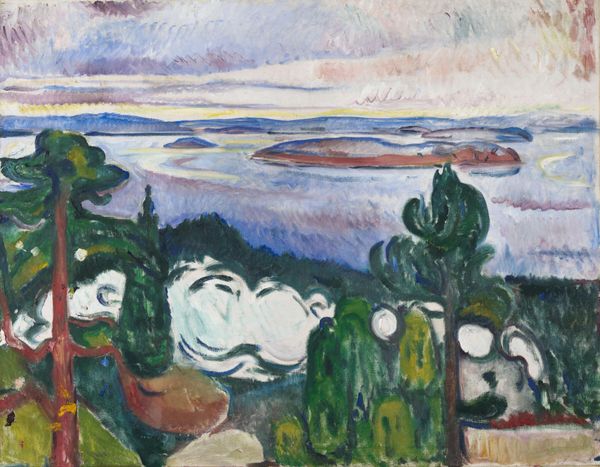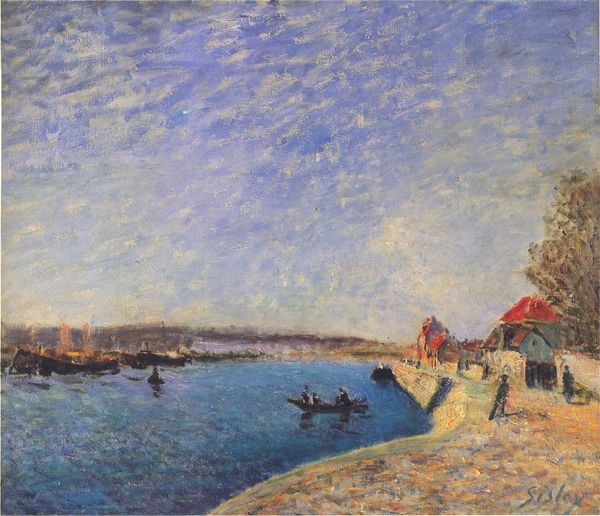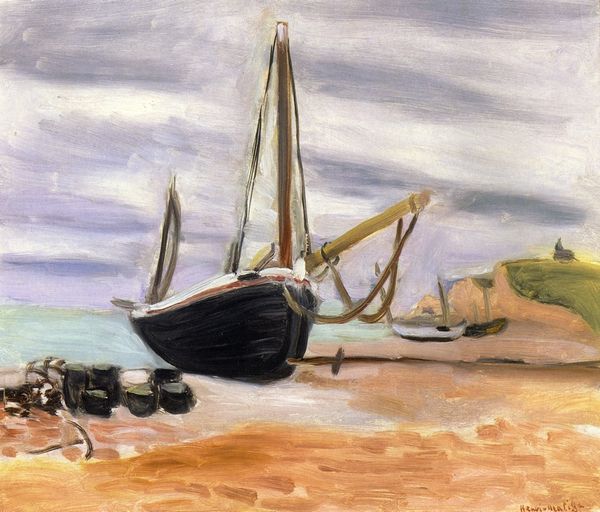
Copyright: Public domain US
Editor: This is Henri Matisse's "Fishing Boats in Winter, Etretat," painted in 1921 using oil on canvas. It's such a striking image. The heavy impasto and bold color choices, especially the reds and greens, give it a real energy, even though the subject matter seems quite still. How do you interpret this work? Curator: Observe how the composition itself generates dynamism. The sharp angles of the buildings, contrasted with the curves of the boats and the cliffs in the distance, create a visual push and pull. Consider also the artist's application of color. Note the seemingly arbitrary use of red in the foreground. Does it advance or recede in space? How does this flatness challenge our perception? Editor: I see what you mean. It's like the red should recede, but it's so vibrant it almost jumps out. It disrupts the perspective. Curator: Precisely! Matisse is not aiming for representational accuracy, but rather for a manipulation of the formal elements. Think of how the repeated vertical strokes in the building on the left interact with the horizontal lines of the sea. Editor: So it's more about how the different shapes and colours play off each other than about accurately portraying a scene? Curator: Yes, it's a negotiation between form and surface. This push for flatness aligns with the formalist concern of revealing painting's inherent qualities and pushing it towards pure abstraction. Editor: That's really interesting. I always thought Fauvism was about the wild colours, but now I see how much it's about the construction of the image itself. Curator: Indeed, this exploration moves us towards a deeper understanding of visual language itself. It has been insightful to reassess its impact today, don’t you agree?
Comments
No comments
Be the first to comment and join the conversation on the ultimate creative platform.
